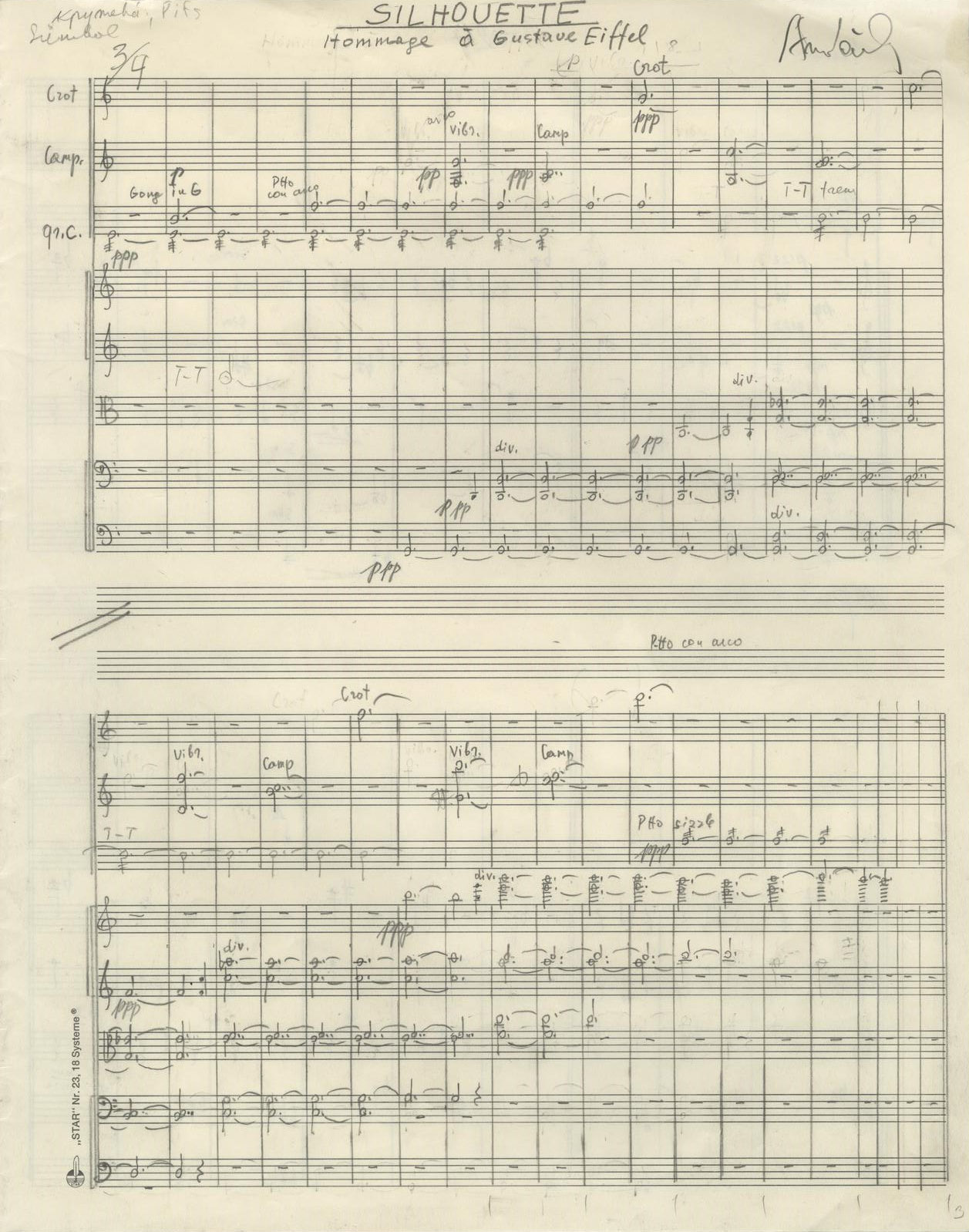Arvo Pärt received the first impulse for composing a work for Paavo Järvi when listening to an extraordinary interpretation of one of his compositions conducted by Järvi. Paavo Järvi’s appointment as chief conductor of Orchestre de Paris became another significant impetus for the idea of a new composition. Looking for a theme associated with Paris or France, the composer chose the symbol of Paris, the Eiffel Tower as his source of inspiration, drawing on a recently published book of illustrations compiled by Bertrand Lemoine, Gustave Eiffel. The Eiffel Tower (Taschen GmbH, 2006). Pärt resonated with the reproductions of meticulous plans and construction blueprints of the Eiffel Tower. As the subtitle of the composition, Hommage à Gustave Eiffel indicates, the piece is …
Arvo Pärt received the first impulse for composing a work for Paavo Järvi when listening to an extraordinary interpretation of one of his compositions conducted by Järvi. Paavo Järvi’s appointment as chief conductor of Orchestre de Paris became another significant impetus for the idea of a new composition. Looking for a theme associated with Paris or France, the composer chose the symbol of Paris, the Eiffel Tower as his source of inspiration, drawing on a recently published book of illustrations compiled by Bertrand Lemoine, Gustave Eiffel. The Eiffel Tower (Taschen GmbH, 2006). Pärt resonated with the reproductions of meticulous plans and construction blueprints of the Eiffel Tower. As the subtitle of the composition, Hommage à Gustave Eiffel indicates, the piece is also a homage to the architect Gustave Eiffel.
Arvo Pärt: “A splendid book of illustrations of the plans and blueprints for the tower lay on my desk, captivating me. I was impressed and inspired in many different ways by Eiffel’s artistic vision, by his combination of sober rationality and elegance. From the perspective of a composer Eiffel’s tower has many features which compare to the structure of a piece of music – the connections between the structural elements, the transparency of the construction, and much more. Even stasis, such an important aspect of architecture, is also a key element of a piece of music.
As regards my work Silhouette, the piece came out short and light, like a dance, a waltz, something dizzying – perhaps like the winds which caress this pointed colossus.” (Programme booklet of the premiere, translation into English by Universal Edition)
The three-platform construction of the Eiffel Tower strongly influenced the musical structure of Silhouette which is composed for string orchestra and percussion instruments and follows a strict tintinnabuli formula. One layer, created by pizzicato passages using diminished intervals and diminished triads, symbolise the airy and floating character of the tower; contrasting arco passages employing more stable harmonies refer to the platforms of the tower. The composition is framed by a slow introduction and coda that are based on the same musical idea, comprising the musical material of the entire composition.
Silhouette was premiered on 4 November 2010 in at the Salle Pleyel in Paris by the Orchestre de Paris conducted by Paavo Järvi. The composition is dedicated to the musicians of the premiere.
